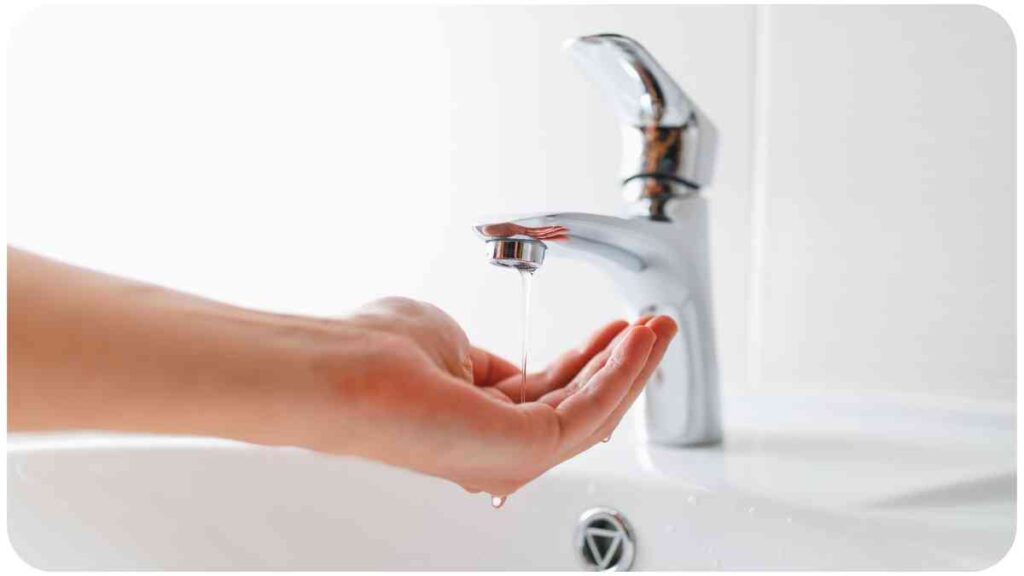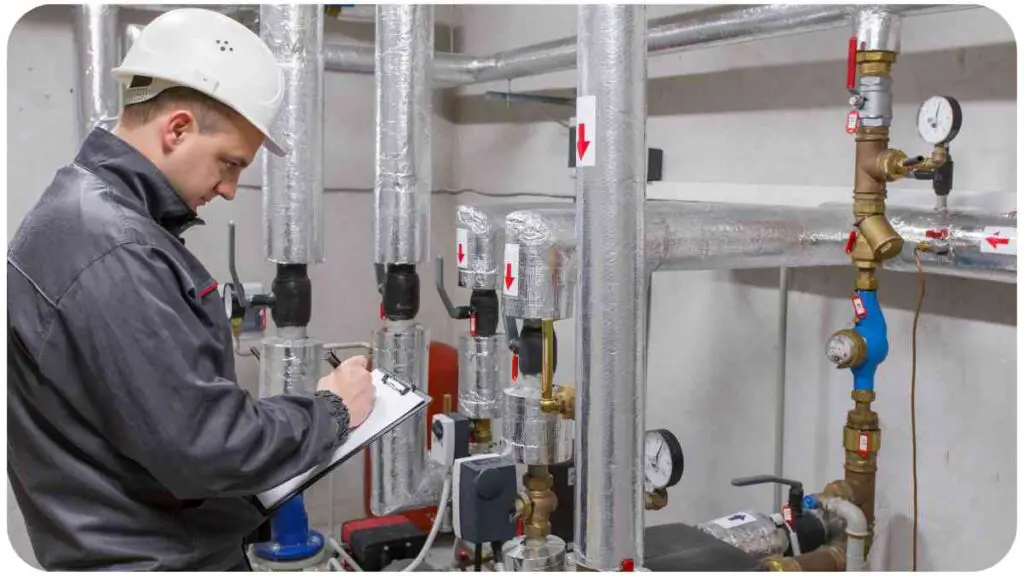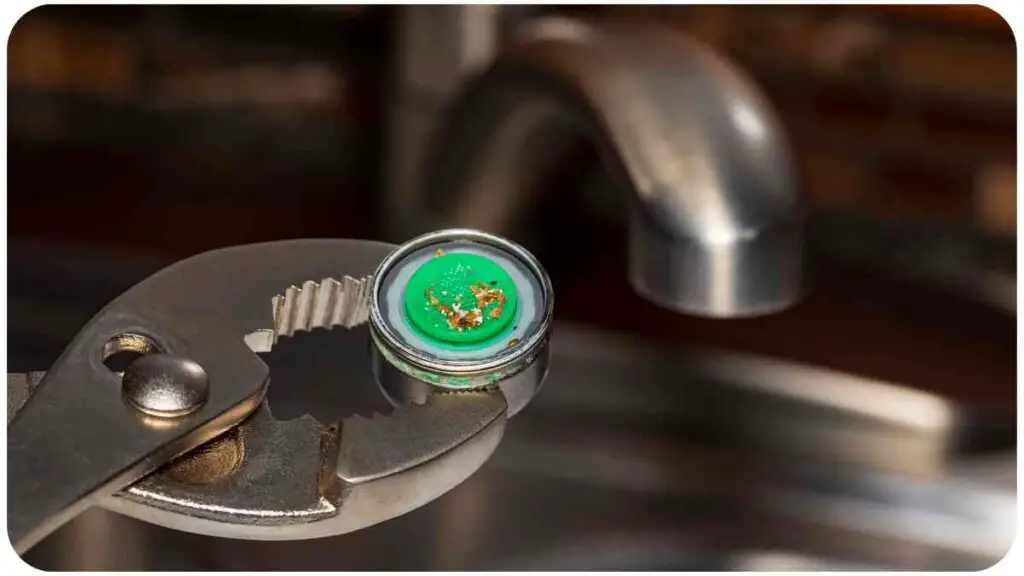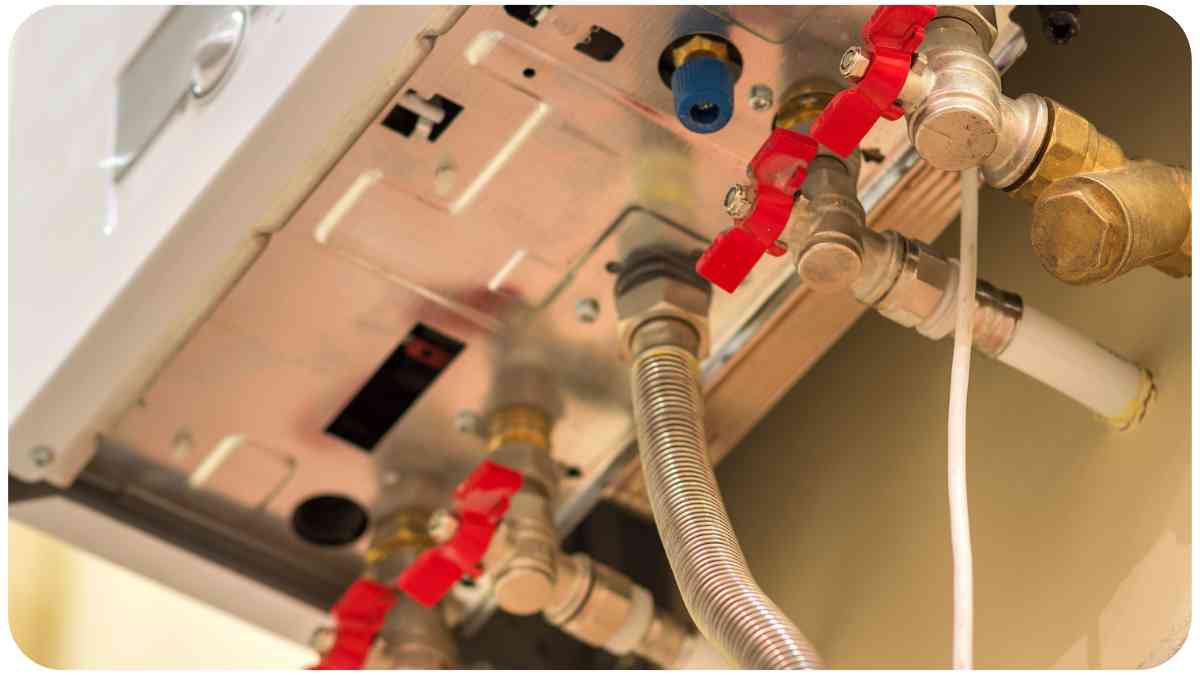Outdoor hose bibs are a crucial component of your home’s water supply system, providing water for gardening, cleaning, and various outdoor activities. When these fixtures experience low water pressure, it can be frustrating and impact your ability to carry out essential tasks.
In this article, we’ll explore the common causes of low water pressure in outdoor hose bibs and provide practical solutions to troubleshoot and address the issue.
Before delving into troubleshooting, it’s essential to recognize the signs of low water pressure. Do you notice a reduced flow of water when using your outdoor hose bibs? Are your sprinklers not operating at their full potential? Identifying these indicators early on can save you time and prevent further damage.
| Takeaways |
|---|
| 1. Early Recognition: Identify signs of low water pressure for prompt action. |
| 2. DIY Troubleshooting: Learn steps to check for hose blockages, inspect pressure regulators, and address pipe issues. |
| 3. Professional Solutions: Consider hiring a plumber or upgrading water supply lines for complex problems. |
| 4. Preventive Maintenance: Regularly clean hose bibs, monitor pressure regulators, inspect pipes, and schedule annual check-ups. |
| 5. Case Studies and Expert Insights: Gain insights from real-life scenarios and professional advice to tackle low water pressure effectively. |
Common Causes of Low Water Pressure

2.1 Sediment Buildup
One prevalent cause of low water pressure is sediment buildup in the hose bib or water supply lines. Over time, minerals and debris can accumulate, restricting the flow of water. Let’s take a closer look at how sediment affects your outdoor water supply.
To ensure your garden thrives, it’s crucial to address fungal diseases promptly. Recognizing symptoms and implementing targeted treatments will safeguard your plants and maintain a vibrant garden.
| Signs of Sediment Buildup | Solutions |
|---|---|
| Reduced water flow | Regularly flush hose bibs to clear sediment |
| Clogged nozzles/sprinklers | Install sediment filters in the water supply line |
2.2 Faulty Pressure Regulator
A malfunctioning pressure regulator can also lead to low water pressure. This component is responsible for maintaining a consistent water pressure level throughout your plumbing system.
| Signs of Pressure Regulator Issues | Solutions |
|---|---|
| Inconsistent water pressure | Check and adjust the pressure regulator settings |
| Water hammering noises | Replace a faulty pressure regulator |
2.3 Pipe Leaks
Leaky pipes can significantly impact water pressure. Whether due to corrosion or physical damage, even small leaks can result in a noticeable reduction in water flow.
| Signs of Pipe Leaks | Solutions |
|---|---|
| Water stains or puddles | Inspect and repair pipe leaks promptly |
| Unexplained water bill increase | Regularly check for hidden leaks |
2.4 Corroded Pipes
Corrosion in water supply pipes is a common issue, especially in older homes. As pipes corrode, their diameter decreases, leading to reduced water pressure.
A leaking hose connection can be frustrating, but this comprehensive guide provides step-by-step solutions. Follow the instructions to fix leaks efficiently, ensuring your garden watering system remains effective and leak-free.
| Signs of Corroded Pipes | Solutions |
|---|---|
| Rusty or discolored water | Replace corroded pipes with new ones |
| Visible signs of corrosion on pipes | Consider upgrading to corrosion-resistant materials |
DIY Troubleshooting Steps
3.1 Checking for Hose Blockages
If you’re experiencing low water pressure in your hose bibs, start by inspecting for any blockages within the hoses.
| Steps to Check for Hose Blockages |
|---|
| 1. Disconnect the hose from the bib. |
| 2. Examine the hose for kinks or twists. |
| 3. Clean out any debris or sediment from the hose. |
| 4. Reattach the hose and test the water pressure. |
3.2 Inspecting Pressure Regulator
The pressure regulator plays a vital role in maintaining optimal water pressure throughout your plumbing system. Follow these steps to inspect and troubleshoot any issues.
| Steps to Inspect Pressure Regulator |
|---|
| 1. Locate the pressure regulator (usually near the main water line). |
| 2. Check for visible signs of damage or leaks. |
| 3. Use a pressure gauge to measure the current water pressure. |
| 4. Adjust the regulator settings if necessary or replace if damaged. |
3.3 Identifying and Fixing Pipe Leaks
Addressing pipe leaks promptly is crucial to preventing further damage and restoring water pressure. Here’s how you can identify and fix pipe leaks.
| Steps to Identify and Fix Pipe Leaks |
|---|
| 1. Inspect visible pipes for signs of leaks (stains, discoloration). |
| 2. Use a water meter to detect hidden leaks. |
| 3. Repair small leaks with epoxy putty or pipe clamps. |
| 4. Consult a professional for extensive pipe repairs or replacements. |
3.4 Dealing with Corroded Pipes
Corroded pipes can significantly impact water pressure. If you suspect corrosion, follow these steps to assess and address the issue.
Maintaining a clear water flow in your garden fountain is easy with these DIY maintenance tips. Regular upkeep ensures your fountain remains a stunning focal point, enhancing the overall appeal of your outdoor space.
| Steps to Deal with Corroded Pipes |
|---|
| 1. Examine visible pipes for signs of corrosion (rust, scaling). |
| 2. Test water quality for rust or discoloration. |
| 3. Consider upgrading to corrosion-resistant pipes. |
| 4. Consult with a plumber for a comprehensive assessment and replacement. |
By following these DIY troubleshooting steps, you can often identify and resolve low water pressure issues in your outdoor hose bibs. However, if the problem persists or if you’re not comfortable with these tasks, it may be time to seek professional help.
Professional Solutions

4.1 Hiring a Plumber
When DIY efforts fall short or if you’re unsure about tackling the issue yourself, hiring a professional plumber is a wise decision.
| Benefits of Hiring a Plumber |
|---|
| Expert diagnosis of the issue. |
| Efficient and lasting solutions. |
| Comprehensive plumbing system evaluation. |
| Peace of mind knowing the problem is handled by a professional. |
4.2 Upgrading Water Supply Lines
significantly contribute to low water pressure. Upgrading to modern and efficient water supply lines can be a long-term solution to enhance water flow and maintain optimal pressure.
Overcoming soil compaction is vital for enhancing plant growth. Implementing these tips will improve soil structure, root development, and nutrient absorption, resulting in healthier and more flourishing plants.
| Benefits of Upgrading Water Supply Lines |
|---|
| Improved water flow and pressure. |
| Resistance to corrosion and leaks. |
| Long-lasting durability. |
| Enhanced overall plumbing system performance. |
4.3 Installing a Pressure Booster Pump
For homes facing persistent low water pressure issues, especially in areas with inadequate municipal water supply, installing a pressure booster pump can be a game-changer.
| Benefits of Pressure Booster Pump Installation |
|---|
| Increased water pressure throughout the house. |
| Consistent water flow for multiple applications. |
| Ideal for homes with varying elevation levels. |
| Energy-efficient and cost-effective solution. |
Maintenance Tips to Prevent Low Water Pressure

5.1 Regular Cleaning of Hose Bibs
Preventive maintenance is key to avoiding low water pressure in outdoor hose bibs. Regularly cleaning and inspecting your hose bibs can help keep them in top condition.
If your outdoor solar lights are not charging, follow these troubleshooting tips to identify and resolve issues. Ensuring proper charging will keep your outdoor lights shining brightly, creating a welcoming and illuminated outdoor environment.
| Steps for Cleaning Hose Bibs |
|---|
| 1. Disconnect hoses and clear any debris. |
| 2. Use a brush to scrub away dirt or sediment. |
| 3. Check for leaks or visible damage. |
| 4. Apply lubricant to moving parts for smooth operation. |
5.2 Monitoring Pressure Regulator
Keep an eye on your pressure regulator to ensure it continues to function optimally.
| Pressure Regulator Maintenance Tips |
|---|
| 1. Schedule annual inspections by a professional. |
| 2. Clean and lubricate moving parts if accessible. |
| 3. Adjust settings as needed based on seasonal changes. |
| 4. Replace the pressure regulator if signs of wear or damage are evident. |
5.3 Pipe Inspections
Regularly inspecting your plumbing pipes can help identify potential issues before they impact water pressure.
| Tips for Pipe Inspections |
|---|
| 1. Look for signs of corrosion or rust on visible pipes. |
| 2. Monitor water quality for any discoloration. |
| 3. Schedule professional inspections for hidden leaks or extensive corrosion. |
| 4. Consider upgrading to corrosion-resistant pipes for long-term benefits. |
5.4 Annual Plumbing Check-ups
An annual plumbing check-up by a professional can uncover hidden problems and ensure your entire plumbing system operates smoothly.
| Benefits of Annual Plumbing Check-ups |
|---|
| Early detection of potential issues. |
| Increased lifespan of plumbing components. |
| Cost-effective preventive maintenance. |
| Peace of mind for homeowners. |
FAQs
6.1 Can Sediment Buildup Affect Water Pressure?
Yes, sediment buildup in hose bibs and water supply lines can restrict the flow of water, leading to low water pressure. Regular cleaning and the use of sediment filters can help mitigate this issue.
6.2 How Often Should I Check my Hose Bibs?
Perform a visual inspection and cleaning of your hose bibs at least twice a year, especially before the gardening or watering season. This helps prevent sediment buildup and ensures optimal performance.
6.3 What’s the Lifespan of a Pressure Regulator?
Pressure regulators typically last around 10-15 years, but their lifespan can vary based on usage and water quality. Regular maintenance and timely replacements can prolong their effectiveness.
6.4 Are Corroded Pipes Fixable?
Small instances of corrosion can be addressed with repairs like epoxy putty or clamps. However, extensive corrosion may require complete pipe replacement. Consult with a professional plumber for a thorough assessment.
Case Studies
7.1 Jane’s Low Pressure Woes
Jane experienced frustratingly low water pressure in her outdoor hose bibs. After trying DIY cleaning methods without success, she consulted a plumber who identified and replaced a corroded section of the water supply line. Jane’s water pressure was restored, emphasizing the importance of professional intervention for complex issues.
7.2 John’s DIY Success Story
John tackled low water pressure by inspecting and cleaning his hose bibs regularly. He also installed a sediment filter in the water supply line. These simple DIY steps significantly improved water flow, showcasing the effectiveness of preventive maintenance.
7.3 Expert Advice: Interview with Plumber Pro
We interviewed Plumber Pro, a seasoned expert in residential plumbing. They emphasized the significance of routine maintenance, recommended upgrading to corrosion-resistant pipes, and highlighted the benefits of professional inspections for long-term plumbing health.
Conclusion
Troubleshooting low water pressure in outdoor hose bibs involves a combination of DIY efforts and professional solutions. By understanding the common causes and following the outlined steps, homeowners can maintain optimal water flow and prevent issues.
Remember, proactive maintenance and timely interventions can save you from the inconvenience of low water pressure and potential damage to your plumbing system.
Further Reading
- Increase Water Pressure in Your Garden Hose
- Explore practical tips and techniques from HGTV to boost water pressure in your garden hose, ensuring optimal performance for your outdoor activities.
- How to Fix Low Water Pressure in an Outdoor Faucet
- Homes and Gardens provide detailed guidance on troubleshooting and fixing low water pressure issues specifically in outdoor faucets, offering solutions for a seamless watering experience.
- What’s Causing Outdoor Faucet Low Water Pressure and How to Fix It
- House Digest delves into the root causes of outdoor faucet low water pressure and provides step-by-step instructions on how to address these issues, ensuring a well-functioning garden hose.
FAQs
Can sediment buildup affect water pressure?
Yes, sediment buildup in hose bibs and water supply lines can restrict the flow of water, leading to low water pressure. Regular cleaning and the use of sediment filters can help mitigate this issue.
How often should I check my hose bibs?
Perform a visual inspection and cleaning of your hose bibs at least twice a year, especially before the gardening or watering season. This helps prevent sediment buildup and ensures optimal performance.
What’s the lifespan of a pressure regulator?
Pressure regulators typically last around 10-15 years, but their lifespan can vary based on usage and water quality. Regular maintenance and timely replacements can prolong their effectiveness.
Are corroded pipes fixable?
Small instances of corrosion can be addressed with repairs like epoxy putty or clamps. However, extensive corrosion may require complete pipe replacement. Consult with a professional plumber for a thorough assessment.
How can I increase water pressure in my garden hose?
Explore practical tips and techniques from HGTV to boost water pressure in your garden hose, ensuring optimal performance for your outdoor activities.

Hi! My name is Hellen James, and I’m here to help you with your home-maintenance needs. Whether it’s building a better yard or just trying to fix a garden—I can show you how.


